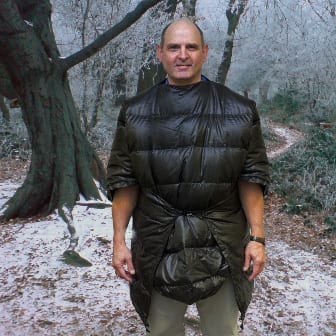You either "live to eat" or "eat to live." I'd read about hikers who cooked great meals, dehydrated them and vacuum sealed them for rehydration and reheating on the trail. I didn't have time for that given that I decided on March 3 to hike and had a start date of March 27. That put me in the "eat to live" category. I did have enough time to dehydrate apples and pears.
How much?
For each day I packed 1.5 to 1.75 lb of food into a plastic bag. That won't replenish all the calories expended from walking 8-12 hours a day, but will hold you over until you can get to a trail town where you can catch up, eating everything you can.
Each day's first meal was 1 cup granola with some powdered milk all in one ziplock bag, that I'd dump into a bowl, add water and eat. After that, I'd munch all day: Clif Bars, Trail mixes. I dipped a spoon into a jar of peanut butter every 30 minutes. A bottle of olive oil would supply a mouthful of energy, also every 30 min.
I bought olive oil at trail towns--the best leakproof container for that is a 500 ml water bottle. I had some Annie's organic gum drops, but before long I disliked them for having too much sugar. The nut mixes from Costco were a favorite from beginning to end. Chocolate or yogurt chips in trail mixes became a gooey mess with the least amount of warmth, even buried in my backpack, thankfully confined to their ziplock bags.
Stove or stoveless?
Plenty of better hikers/writers than I have written about this choice. Google that.
I went stoveless because I wanted to reduce the weight I carried and because I thought alcohol stoves were prohibited. Regulations require that stoves have a shut off mechanism, which the failure proof alcohol stoves, having no moving parts, didn't. I didn't want to take a heavier, more complex canister stove. The key to taking an alcohol stove, that I should have remembered is that mine could be instantly snuffed out by covering it with an inverted can.
FYI: My saucepan, pot cozy, BIC lighter, spoon, alcohol stove, windscreen and fuel bottle weighs 9.5 oz. Fuel for the stove would have been about 4-6 oz. The leakproof Nalgene container I bought to mix my dinners weighed 5 oz.
It's not really cooking. It's reheating. Cooking is a burden no long trail hiker needs on the trail. One hot meal a day was what I had planned for. Hiking the Wonderland Trail in 2013, I learned that more than that ate up 30-45 minutes.
Don't do as I did: change my dinner plan from cook to stoveless without changing the menu. I changed. I decided I'd eat the same food intended for cooking by soaking the food for a few hours before dinner. Food like instant rice needs heat for the water to soften. Instant brown rice doesn't soften without heat--white rice is a stretch..

Stoveless
A stoveless menu would have had different, and better, choices for dinner, perhaps like tortilla or pita wraps, more Idahoan potato packages, sausage, cheese, salami, pepperoni, tuna and salmon packs, nut butters, etc.
Many stoveless choices will have water mixed in.
Hummus mix is a good pick--sources abound.
Idahoan potatoes hydrated well and tasted good cold.
Pasta sides and rice sides did not sit well with me for my stoveless menu.
Dried bean mixes, (pictured above) from a food co-op or maybe Whole Foods do rehydrate well without heat.
Coffee
I'm not a hostage to coffee. If you're a coffee fanatic, you'll pay the penalty in pack weight, carrying grounds or beans, a French press, grinder, etc. I like Trader Joe's Instant or Starbucks Via packs. The Via products are good and even do well cold, though I prefer it hot, if at all.


